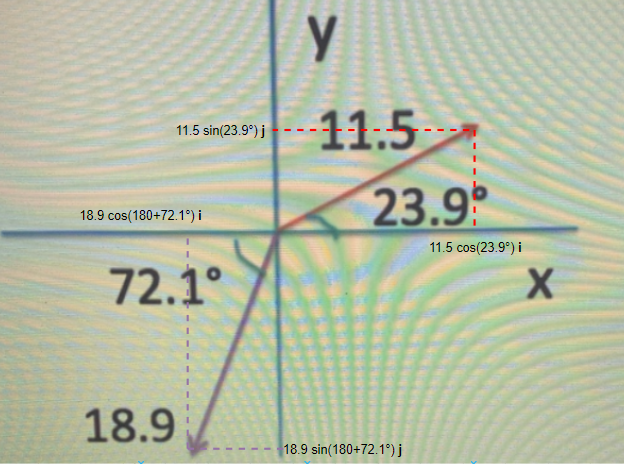11.5 23.9° 72.1° 18.9
Related questions
Question
what is vector C in this case?

Transcribed Image Text:y
11.5
23.9
72.1°
18.9
There are two vectors shown in the previous figure. The red vector, vector A, has a
magnitude of 11.5 and makes a 23.9° angle with +x. The other purple vector, vector
B, has a magnitude of 18.9 and makes a 72.1° angle with-x. Determine the sum of
the two vectors (A+B) by indicating its magnitude and direction.
Problem 2
Determine the vector C, such that when it is added to vector A (the red vector in the
previous figure), the resultant vector only has a negative y component and its
magnitude is 10.
Expert Solution
Step 1
The vector components are overlaid on the figure below,

So the vector A can be written as,
Step by step
Solved in 4 steps with 1 images
